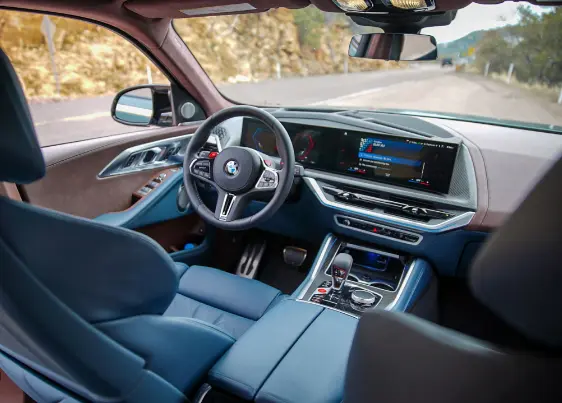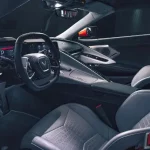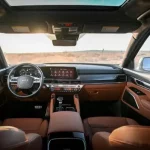The world of automotive design is in a constant state of evolution, driven by changing consumer preferences, technological advancements, and environmental concerns.
Car manufacturers continually adapt to these trends to create vehicles that not only perform well but also offer exceptional comfort, style, and functionality. In this article, we’ll explore how automotive trends have a profound impact on car interior design.
**1. Sustainability and Eco-Friendly Materials:**
As environmental consciousness grows, car interior design trends have shifted towards sustainability. Manufacturers are increasingly using eco-friendly materials such as recycled plastics, sustainable woods, and natural fabrics like organic cotton and hemp. These materials not only reduce the environmental footprint of vehicles but also appeal to environmentally conscious consumers.
**2. Connectivity and Infotainment:**
The rise of smartphones and the demand for seamless connectivity have significantly influenced car interiors. Modern vehicles are equipped with advanced infotainment systems, touchscreen displays, and smartphone integration (e.g., Apple CarPlay and Android Auto). These technologies have become integral parts of car interiors, catering to the desire for connectivity and convenience.
**3. Autonomous Driving:**
The emergence of autonomous driving technology has brought about significant changes in car interiors. As vehicles shift towards self-driving capabilities, traditional layouts may evolve to resemble mobile lounges or workspaces. Seats may recline, and interior configurations could pivot towards providing more comfort and convenience for passengers.
**4. Minimalism and Simplicity:**
Minimalist interior designs have gained popularity, characterized by clean lines, uncluttered surfaces, and a focus on essential features. This trend emphasizes simplicity and functionality, creating a sense of spaciousness and modernity in car interiors.
**5. Electric and Hybrid Vehicles:**
The shift towards electric and hybrid vehicles has influenced car interior design. These vehicles often feature futuristic and high-tech interiors, reflecting the advanced nature of electric propulsion. Additionally, eco-conscious buyers may appreciate interiors that incorporate sustainable materials and emphasize energy efficiency.
**6. Autonomous Features and Driver-Assistance Systems:**
The integration of advanced driver-assistance systems (ADAS) and semi-autonomous features has necessitated changes in car interior design. Displays and controls related to these systems are more prominent, ensuring that drivers can easily access and interact with the technology while keeping their focus on the road.
**7. Safety and Comfort:**
Safety and comfort have always been crucial aspects of car interior design, and current trends continue to emphasize these factors. Features like advanced airbag systems, ergonomic seating, and noise-reduction materials aim to enhance safety and provide a more comfortable ride.
**8. Customization and Personalization:**
Car manufacturers increasingly offer customization and personalization options for car interiors. Buyers can choose from various color schemes, materials, and finishes to create a unique and personalized driving experience. This trend caters to consumers who want their vehicles to reflect their individual tastes and lifestyles.
**9. High-Quality Materials:**
Luxury materials like premium leather, wood veneers, and high-quality metals continue to be a trend in upscale car interiors. These materials convey a sense of opulence and craftsmanship, appealing to those seeking a high-end driving experience.
**10. Ergonomics and User-Centric Design:**
Car interior designs are becoming more user-centric, with a focus on ergonomic layouts and user-friendly controls. Manufacturers conduct extensive research to ensure that controls and features are intuitively placed for easy access and use.
**11. Mood Lighting and Ambiance:**
Mood lighting and ambient lighting options have become popular in car interiors. Drivers can choose from a variety of colors and intensity levels to create a personalized ambiance that suits their mood and preferences.
**12. Sustainable Cabin Air Filtration:**
With an increased emphasis on health and well-being, some car manufacturers are incorporating advanced air filtration systems into their vehicles. These systems aim to improve cabin air quality by filtering out allergens and pollutants, creating a healthier driving environment.
**Conclusion:**
Car interior design is a dynamic field that continuously adapts to shifting automotive trends. Whether it’s sustainability, connectivity, autonomous driving, or customization, these trends have a profound impact on the way vehicles are designed and the experiences they offer to drivers and passengers. As technology and consumer preferences continue to evolve, we can expect car interiors to remain at the forefront of innovation and design in the automotive industry.


